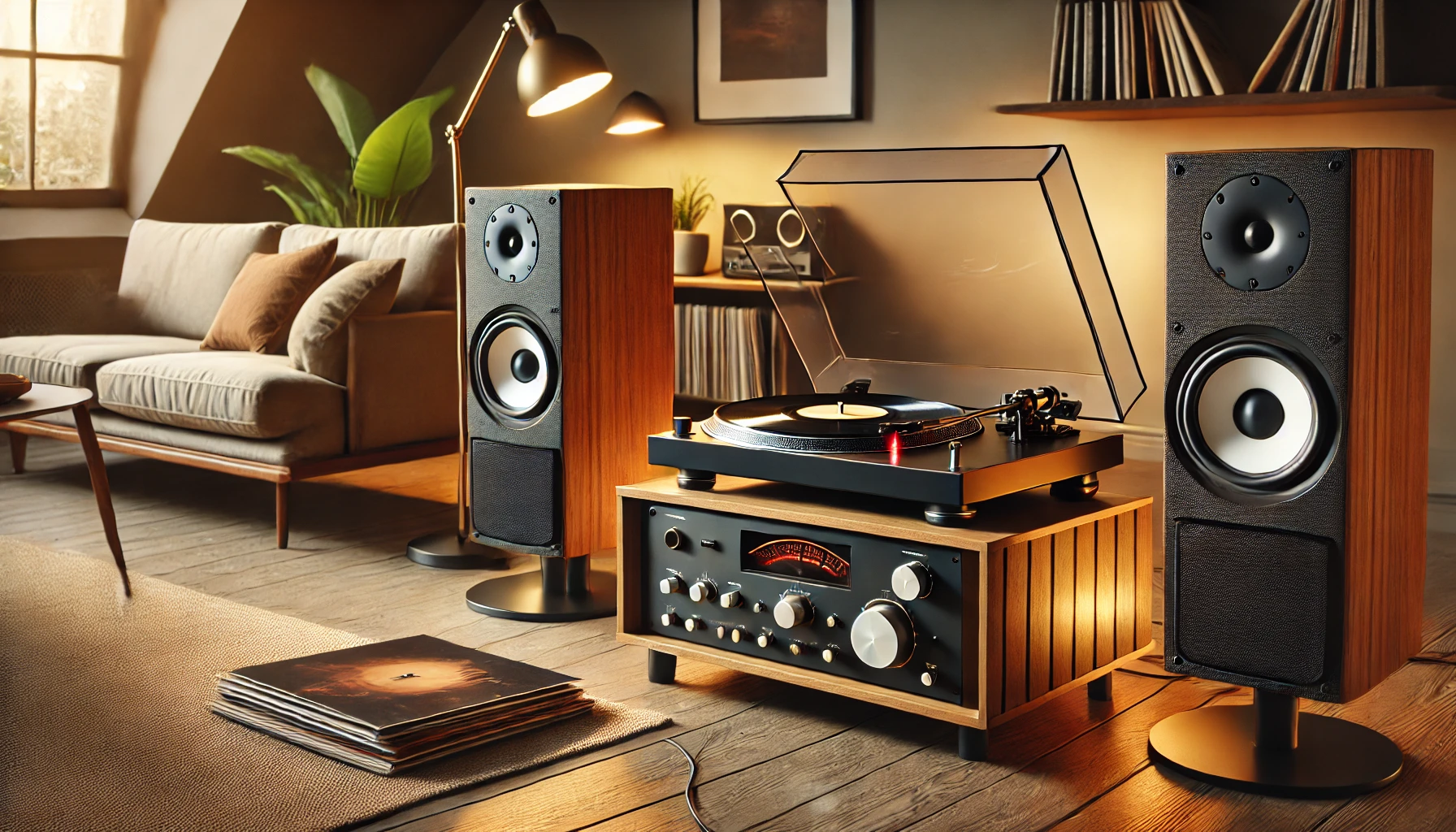Did you know that vinyl record sales have been steadily increasing for the past 15 years? In 2020 alone, vinyl outsold CDs for the first time since the 1980s!
And get this – in 2021, vinyl sales in the US hit $1 billion, a number not seen since 1986. It’s clear that the vinyl resurgence is here to stay, and if you’re diving into this world of warm, rich analog sound, you might be wondering about all the equipment involved.
One crucial component that often confuses newcomers is the turntable preamp. So, let’s dive in and demystify this essential piece of audio gear!
What Is a Preamp for a Turntable and Do I Need One?
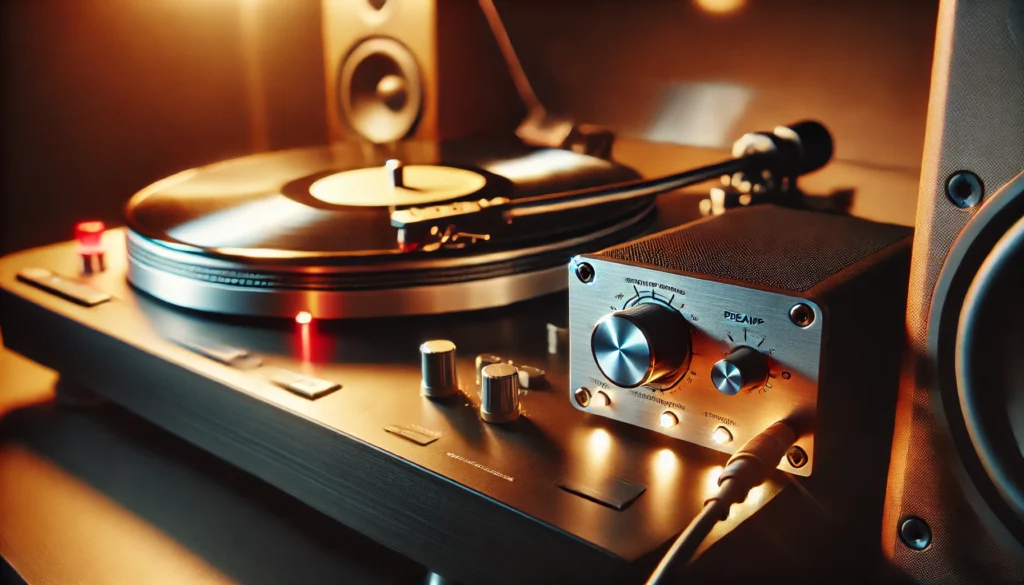
A turntable preamp, also known as a phono preamp or phono stage, is a device that amplifies the weak signal from your turntable’s cartridge to a level that your stereo system can use.
It also applies RIAA equalization to correct the frequency response of the vinyl recording. Without a preamp, you’d barely hear anything from your records, and what you did hear would sound all wrong!
Do you need one? Well, if you’re reading this, chances are you do! But don’t worry, we’ll explore this topic more deeply below and help you figure out if you need to add a preamp to your setup.
The Basics of Turntable Preamps
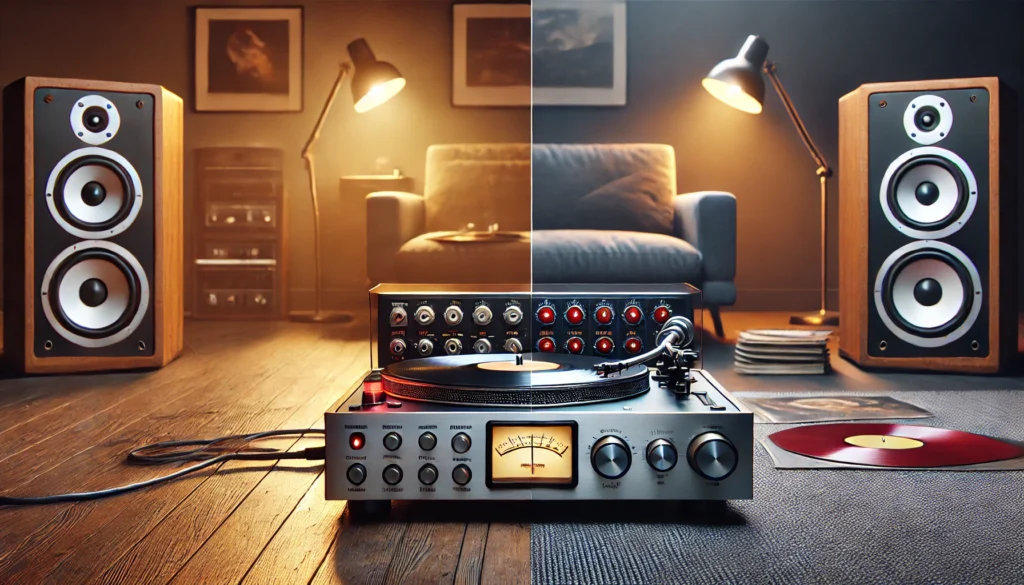
Alright, let’s break this down in simple terms. You know how when you’re whispering, it’s hard for people to hear you? Well, that’s kinda what’s happening with your turntable.
The signal coming from the needle (or stylus, if we’re being fancy) is super weak – like, whisper-level weak. The preamp’s job is to be that annoying friend who always repeats what you said, but way louder so everyone can hear.
But it’s not just about making things louder. Oh no, that would be too simple! See, when they make vinyl records, they have to tweak the sound a bit.
They boost the high frequencies and cut the low ones. Why? Well, if they didn’t, the grooves would be so wide that you’d only fit like 10 minutes of music on each side!
The preamp’s other job is to undo this tweak, so what you hear is what the artist intended.
Now, there are two types of preamps: internal and external. Some turntables, amplifiers, or receivers have preamps built right in.
That’s an internal preamp. An external preamp is a separate box that sits between your turntable and your amp. Both do the same job, but external ones often give you more control and sometimes better sound quality.
Let me tell you, when I first started getting into vinyl, I thought all this preamp stuff was just audiophile mumbo-jumbo.
Boy, was I wrong! The difference a good preamp makes is like night and day. It’s like going from watching a movie on your phone to seeing it in IMAX.
Suddenly, you’re hearing details in your favorite songs that you never knew were there!
Why You Might Need a Turntable Preamp
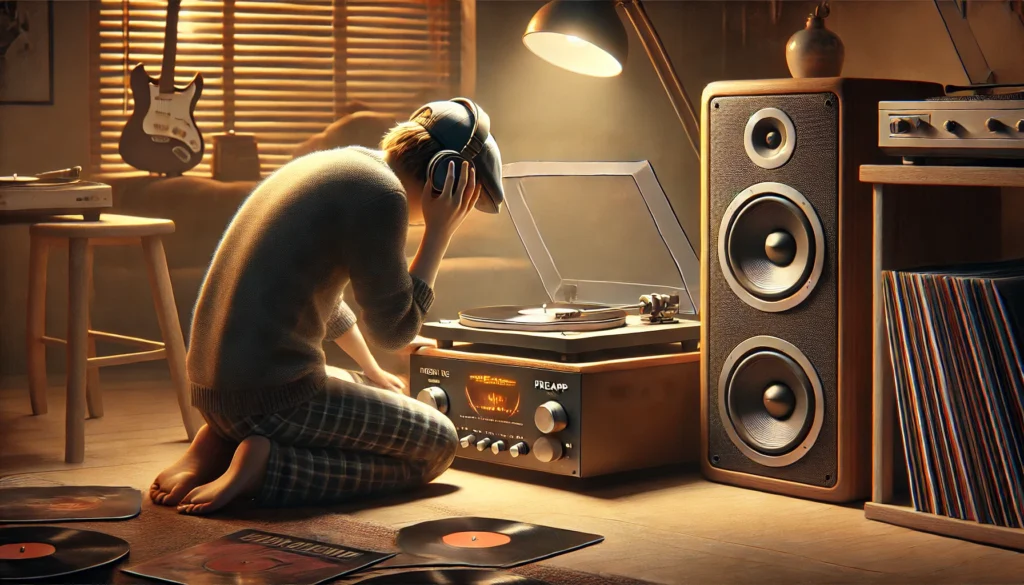
Let me tell you a little story. When I first got into vinyl, I was so excited to set up my new turntable. I plugged everything in, put on my favorite record, and… nothing. Well, almost nothing. I could hear the music, but it was so quiet I had to press my ear against the speaker! That’s when I learned about preamps the hard way.
See, the signal from a turntable is about 1000 times weaker than the signal from something like a CD player or your phone. Without a preamp, it’s like trying to fill a swimming pool with a garden hose – it’s just not gonna cut it.
But it’s not just about volume. Remember that RIAA equalization I mentioned earlier? Without that, your music would sound thin and screechy, with way too much treble and not enough bass. Trust me, nobody wants to listen to their favorite album sounding like it’s being played through a tin can telephone!
The RIAA equalization curve is actually pretty fascinating when you dig into it. It was standardized back in 1954 (yeah, way before my time!) to allow longer playing times on vinyl records and improve sound quality. The curve reduces the bass frequencies and boosts the high frequencies during recording. Then, the preamp applies the inverse of this curve during playback, restoring the original balance of frequencies. It’s like a secret code that only your preamp knows how to decode!
Signs You Don’t Have a Preamp (and Need One)
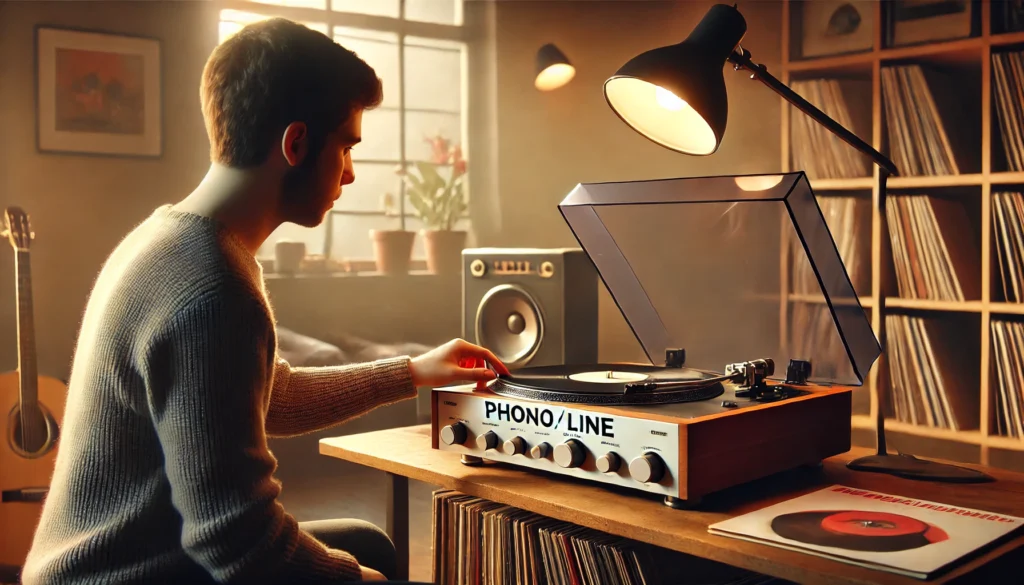
Okay, so how do you know if you need a preamp? Well, there are a few telltale signs:
- Your turntable sounds super quiet, even with the volume cranked up.
- The sound is thin and tinny, lacking any real bass.
- You’ve plugged your turntable into an input labeled “AUX” or “LINE” instead of “PHONO.”
- Your records sound distorted or “off,” especially in the high frequencies.
- You can hear the music, but it lacks depth and detail.
If any of these sound familiar, you might be missing a preamp. But before you rush out to buy one, let’s do a quick check. Look at the back of your turntable. Do you see a little switch labeled “PHONO/LINE”? If you do, congrats!
You’ve got a built-in preamp. Just make sure it’s switched to “LINE” when you’re connecting to a regular input.
No switch? Check your amplifier or receiver. Is there an input labeled “PHONO”? If so, you’re in luck – that input has a preamp built in. Just make sure you use it!
If you’ve struck out on both counts, don’t worry. It just means you get to go shopping for a shiny new preamp!
I remember when I first realized I needed a preamp. I was trying to play a pristine copy of Pink Floyd’s “The Dark Side of the Moon” that I’d just scored at a flea market.
I was so excited to hear that iconic heartbeat at the beginning of “Speak to Me,” but all I got was a faint thump-thump that sounded more like a mouse tap-dancing than a heartbeat. That’s when I knew I had some shopping to do!
Choosing the Right Preamp for Your Turntable
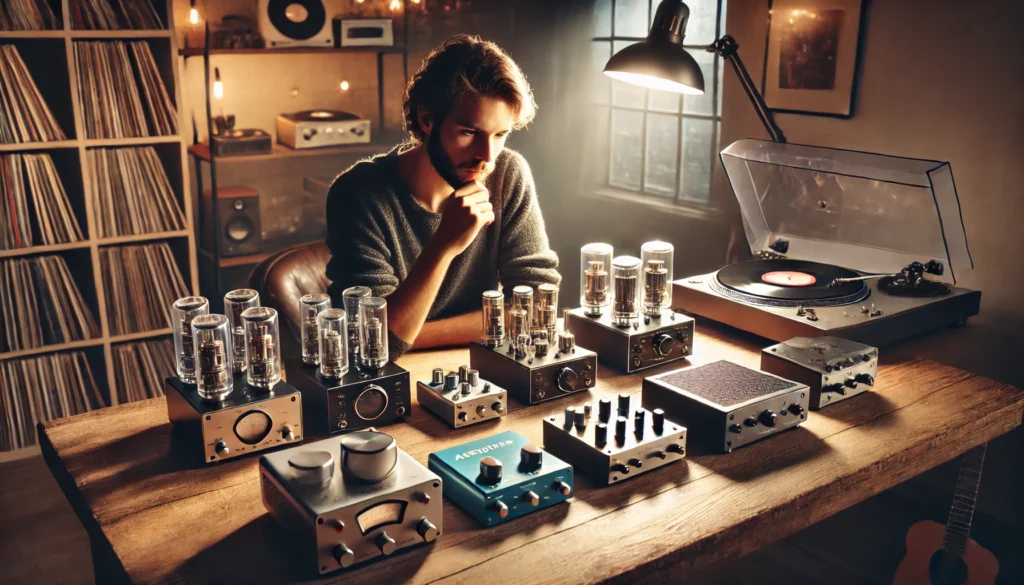
Alright, so you need a preamp. But which one? Man, when I first started looking, I felt like I was drowning in a sea of options.
There were $50 preamps and $5000 preamps, and they all claimed to be the best thing since sliced bread. It was overwhelming!
Here’s what I’ve learned: the right preamp for you depends on a few things:
- Your budget: You can get decent preamps starting around $50-$100. But if you’ve got a high-end turntable, you might want to invest more.
- Your cartridge type: There are two main types – Moving Magnet (MM) and Moving Coil (MC). Most entry-level turntables use MM cartridges, which work with most preamps. If you’ve got an MC cartridge, you’ll need a preamp that supports it.
- Your ears: At the end of the day, trust your ears. A more expensive preamp isn’t always better if you can’t hear the difference.
- Features: Some preamps come with extra features like adjustable gain, impedance settings, or even USB outputs for digitizing your vinyl. Think about what features might be useful for your setup.
- Your future plans: If you’re just dipping your toes into vinyl, a budget option might be fine. But if you’re planning to upgrade your turntable or cartridge in the future, it might be worth investing in a more versatile preamp now.
When I was starting out, I went with a budget-friendly option – the Art DJ Pre II. It did the job just fine and didn’t break the bank.
As I got more into vinyl, I upgraded to a Pro-Ject Tube Box S2. The difference was noticeable, but honestly, I was happy with both.
One thing I’ve learned is that preamps can have different “flavors” of sound. Solid-state preamps tend to be clean and neutral, while tube preamps can add a bit of warmth to the sound. It’s kind of like the difference between digital and film photography – neither is necessarily better, just different.
And here’s a pro tip: don’t be afraid to try before you buy if you can. Some hi-fi shops will let you test out different preamps with your own turntable.
It’s like test-driving a car – you wouldn’t buy one without taking it for a spin first, right?
Setting Up Your Turntable Preamp
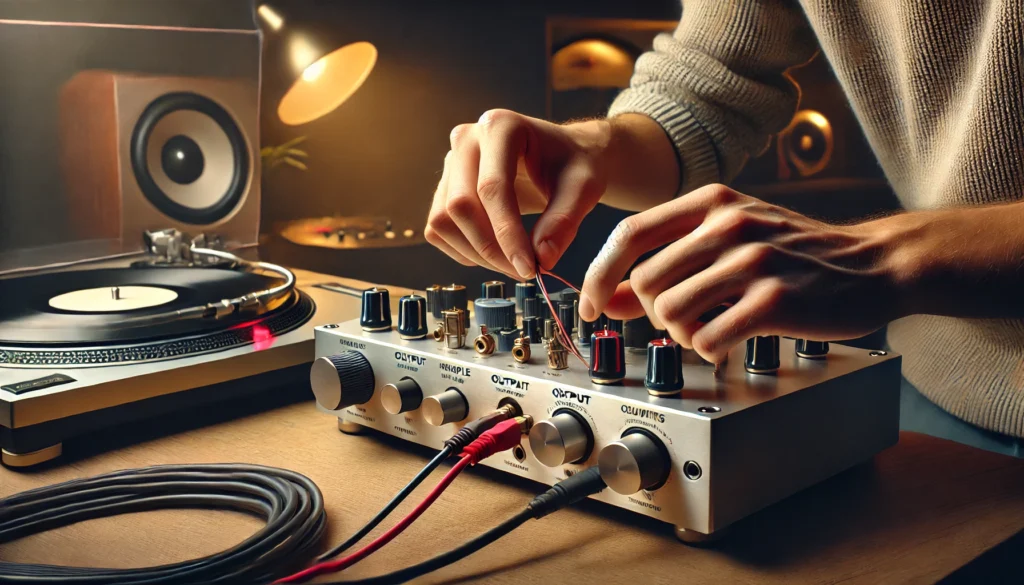
Setting up a preamp might sound daunting, but trust me, it’s not rocket science. Here’s a quick step-by-step:
- Connect your turntable’s output cables to the preamp’s input.
- Connect the preamp’s output to your amplifier or powered speakers.
- If your turntable has a ground wire, connect it to the preamp’s ground terminal.
- Plug in the preamp and turn everything on.
Sounds simple, right? Well, it usually is, but there are a couple of gotchas to watch out for. First, make sure you’re not doubling up on preamps. If your turntable has a built-in preamp, make sure it’s switched to “PHONO” when using an external preamp.
Also, pay attention to that ground wire. If you hear a hum, it’s probably because the ground wire isn’t connected properly.
I once spent hours troubleshooting a hum, only to realize I’d forgotten to connect the ground wire. Don’t be like me!
Here are a few more tips to get the best sound out of your preamp:
- Keep it away from other electronics: Preamps amplify very weak signals, so they can pick up interference easily. Try to keep your preamp away from things like cell phones, routers, or even power strips.
- Use good cables: You don’t need to spend a fortune, but using decent quality cables can make a difference. Look for well-shielded cables to minimize interference.
- Experiment with placement: Sometimes, moving your preamp just a few inches can make a difference in sound quality. Don’t be afraid to play around with it.
- Give it time to warm up: Some preamps, especially tube ones, sound better after they’ve been on for a while. Try turning on your preamp 15-30 minutes before you start listening.
- Check your cartridge alignment: This isn’t strictly about the preamp, but a poorly aligned cartridge can make even the best preamp sound bad. If you’re not sure how to do this, most local hi-fi shops can help.
The Impact of a Good Preamp on Your Vinyl Experience
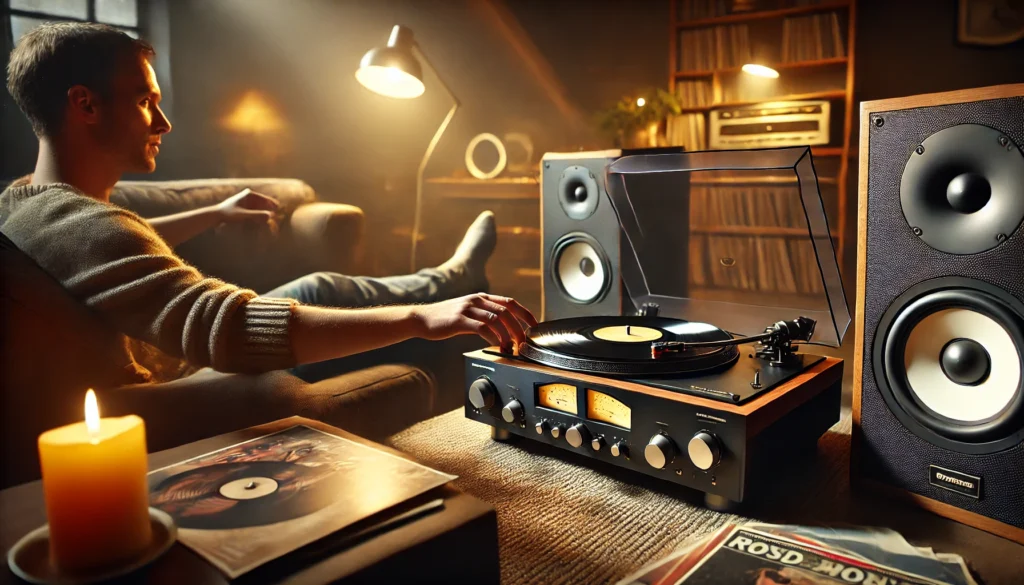
Now, you might be thinking, “Do I really need to fuss with all this preamp stuff? Can’t I just plug my turntable into my speakers and call it a day?”
Well, sure, you could. But let me tell you, once you hear your records through a good preamp, you’ll never want to go back.
A good preamp doesn’t just make your records louder – it brings them to life. Suddenly, you’re hearing details you never noticed before.
The bass becomes tighter and more defined. The highs sparkle without being harsh. The soundstage opens up, making you feel like the band is playing right there in your living room.
I remember the first time I really appreciated what a good preamp could do. I was listening to Miles Davis’s “Kind of Blue” – an album I thought I knew inside and out.
But with my new preamp, it was like hearing it for the first time. I could hear the breath in Miles’s trumpet, the subtle brush work on the drums, the woody resonance of the bass. It was like someone had wiped a layer of grime off a beautiful painting.
But it’s not just about the audiophile stuff. A good preamp makes listening to records more enjoyable, period. You don’t have to crank the volume to hear everything.
You don’t get listening fatigue as quickly. And most importantly, you get to hear your music the way the artists intended it to be heard.
Future-Proofing Your Vinyl Setup
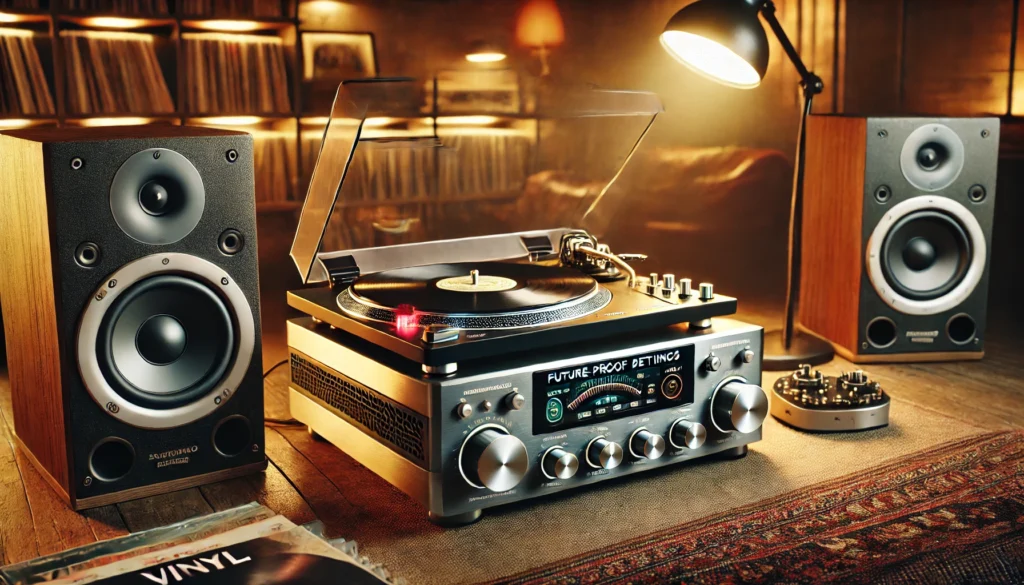
One last thing to consider when thinking about preamps is future-proofing your setup. Vinyl can be a bit of a rabbit hole (trust me, I know!), and once you start, you might find yourself wanting to upgrade other parts of your system.
A good preamp can grow with you. If you decide to upgrade your turntable or cartridge down the line, a versatile preamp can accommodate those changes. Some higher-end preamps even allow you to adjust settings like capacitance and resistance, letting you fine-tune the sound to your specific cartridge.
And if you’re into the whole analog-meets-digital thing, some preamps come with USB outputs. This lets you connect your turntable to your computer and digitize your vinyl collection. It’s a great way to preserve those rare records or make digital copies for on-the-go listening.
Conclusion
Whew! We’ve covered a lot of ground, haven’t we? From understanding what a preamp does to choosing the right one for your setup, you’re now armed with the knowledge to take your vinyl game to the next level.
Remember, a preamp is an essential part of any turntable setup. It’s not just about making things louder – it’s about bringing your records to life, letting you hear them as they were meant to be heard. Whether you go for a budget option or splurge on a high-end model, adding a preamp to your system can make a world of difference.
But here’s the thing – at the end of the day, the most important thing is enjoying your music. Don’t get so caught up in the technical details that you forget why you got into vinyl in the first place. It’s about the ritual of putting on a record, the warm sound, the connection to the music. A good preamp enhances that experience, but it’s not the be-all and end-all.
So, what are you waiting for? It’s time to assess your setup and see if you need to add a preamp to the mix. And hey, once you’ve got everything dialed in, why not drop a comment and let us know what preamp you chose and how it’s working out for you? Your experience could help out another vinyl newbie!
Now, if you’ll excuse me, I’ve got some records to listen to. Happy spinning, folks!
